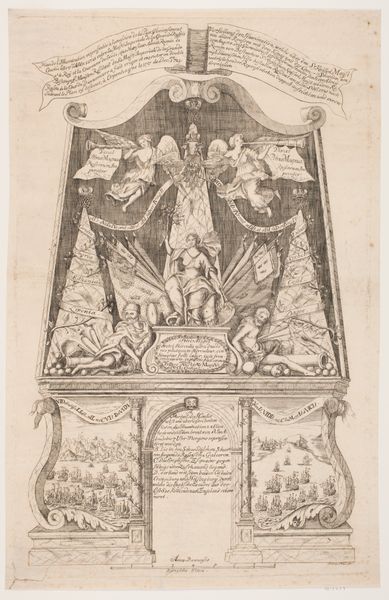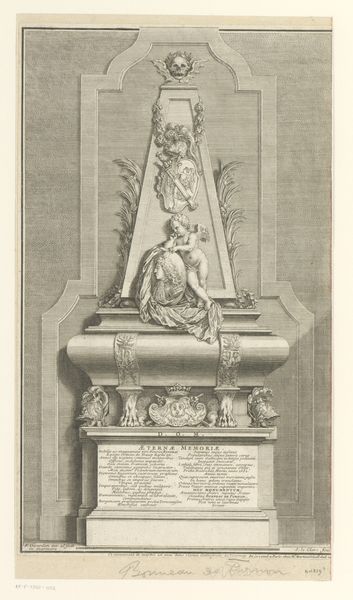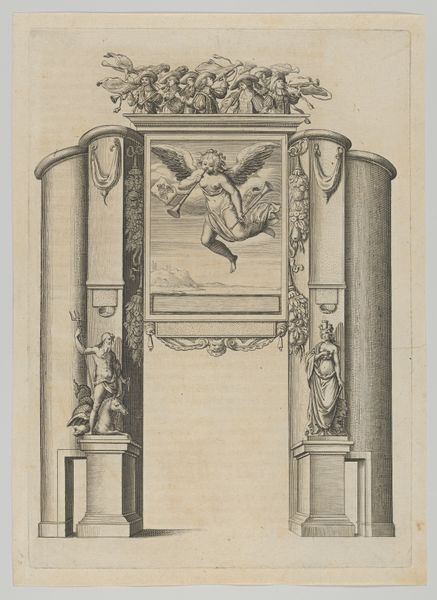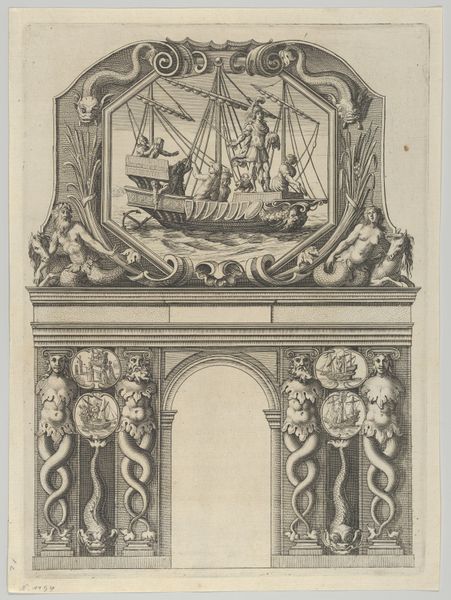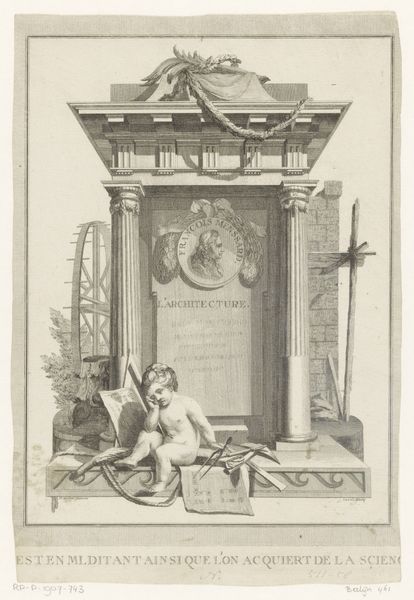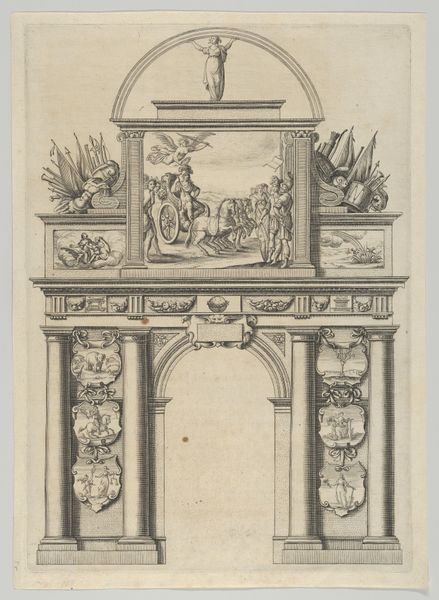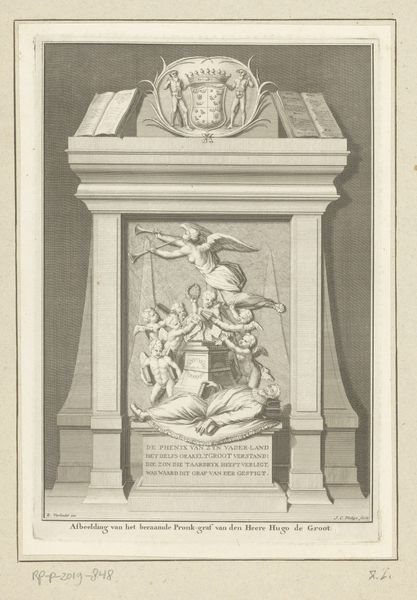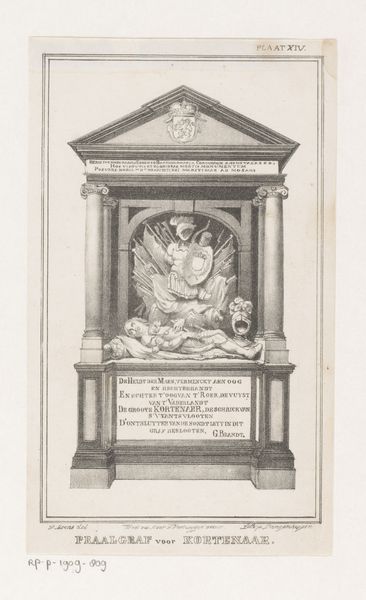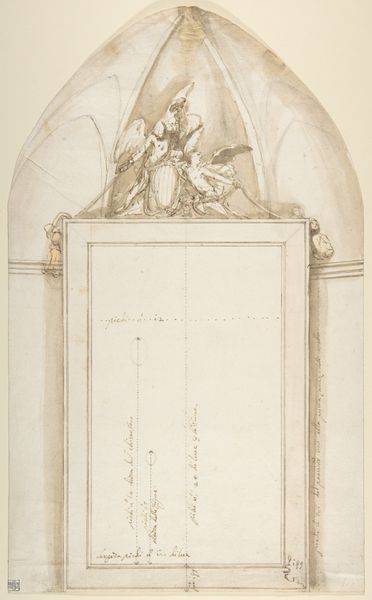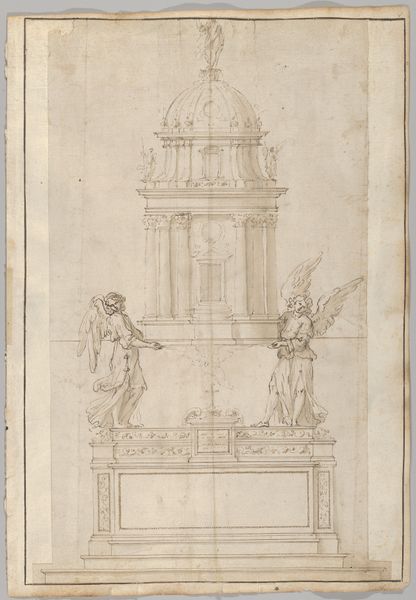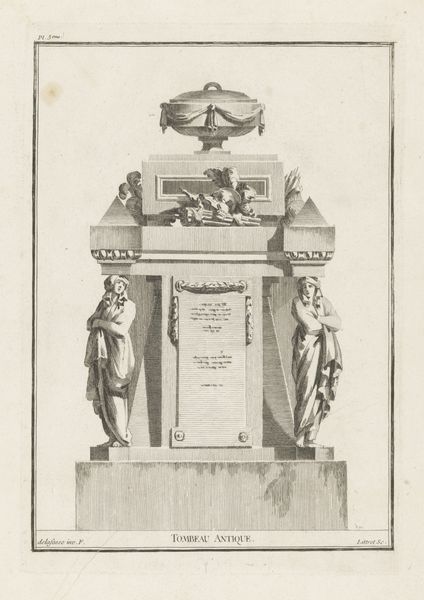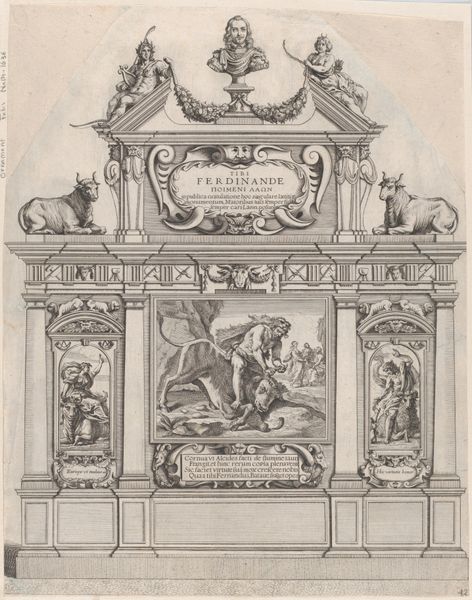
Design for an Unexecuted Funerary Monument for the First Duke of Marlborough n.d.
0:00
0:00
drawing, print, paper, watercolor, ink, graphite, pen, architecture
#
portrait
#
drawing
# print
#
classical-realism
#
paper
#
watercolor
#
ink
#
graphite
#
pen
#
cityscape
#
history-painting
#
architecture
Dimensions: 379 × 246 mm
Copyright: Public Domain
Editor: So, this is John Michael Rysbrack’s "Design for an Unexecuted Funerary Monument for the First Duke of Marlborough," done in pen, ink, graphite, and watercolor on paper. It has this really ornate, classical feel... What’s your read on this piece? Curator: Well, immediately I'm drawn to the process of its making, this meticulously rendered design, the labour involved in producing such a detailed proposal. The layers of graphite, ink, and watercolour hint at the steps taken, almost like a record of production. Editor: Absolutely! The level of detail is stunning. Did the materials influence Rysbrack's design decisions, maybe thinking about how the monument might eventually be constructed? Curator: Precisely. Consider the relationship between this drawing and the proposed monument itself. Stone, marble, the materials of the Duke's actual memorial, would be extracted, transported, carved by a multitude of hands. Rysbrack’s role sits within a whole system of production and commodification surrounding the Duke's legacy. It’s about labor, class, and the monumentalizing of power. Editor: That’s interesting… it never occurred to me how much the design itself relies on industry. What about its unexecuted status? Does that change things? Curator: Good question. The “unexecuted” part highlights a potential rupture in this cycle. Why was it not commissioned? Who had the power to deny such a monument, and what does that reveal about the social and economic forces at play? The paper, the ink – they survive as a document of thwarted ambition. Editor: It makes you think about what *did* get made, and why. It’s less about the Duke as an individual and more about… Curator: More about the industrial infrastructure required to shape and maintain historical narratives.
Comments
No comments
Be the first to comment and join the conversation on the ultimate creative platform.
